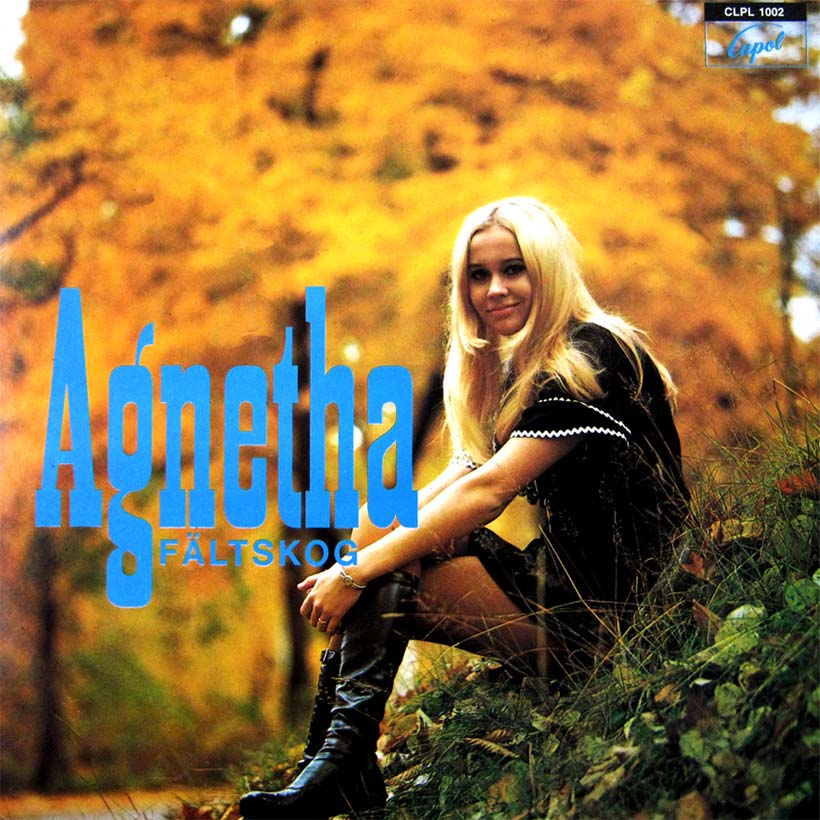As a young girl with dreams of fame and fortune, Agnetha Fältskog must have felt that the chances of emulating her idol Connie Francis’ international success were remote while growing up in the small Swedish town of Jönköping. That her first self-penned single would top the national charts before she had turned 18, and that she’d find herself one-quarter of the world’s biggest pop band, ABBA, is the stuff of fairy tales, and Agnetha’s self-titled debut is a magical opening chapter.
As first issued, in December 1968, Agnetha Fältskog comprised of both sides of the five Swedish singles that the singer had released by the end of 1968, plus two new tracks. The teenager was credited with the lyrics to nine of those songs and, tellingly, with the composition to three, including her breakthrough single, “Jag Var Så Kär,” which opens the album (and whose title translates to “I Was So In Love”). That song, initially relegated to the B-side of a cover of Julie Grant’s “Hello Love,” with Swedish lyrics by Agnetha, only caught the attention of a handful of radio DJs at first, and it wasn’t until an appearance on a local TV show that the track started to take off. It’s indicative of much of the album, which Agnetha would later say she wasn’t entirely happy with (“Many of the rhymes are just awful”), though that says more about the ferocious quality control that characterized ABBA than it does about the talent on display here.
Becoming central to ABBA’s sound
Agnetha Fältskog is a 60s pop album through and through, with much of the material reminiscent of her English-speaking contemporaries such as Judith Durham of The Seekers, Cilla Black, and even Dusty Springfield. None of the tracks breaches a three-and-a-half-minute running time, and a lilting melancholy underpins them all. What strikes you almost half a century later, however, is a fully matured example of the crystal-sharp precision of Fältskog’s stunning soprano range that became so memorably central to ABBA’s sound.
Agnetha had honed her delivery providing vocals for local dance bands and, when her first record took off, was still working the switchboard at a car firm. She had been discovered when a record producer heard her demo tape and brokered a professional recording session for her at the Philips Studio in Stockholm, which got her signed to the Swedish Cupol record label.
Some of those songs made it to the album, but Agnetha’s second single stalled and the third, the waltz “En Sommar Med Dej,” written by her father, failed to chart at all. A deal was signed to pair her with the West German hitmaker Dieter Zimmerman, and four of their songs made it to the first LP. They epitomize the schlager sound – melodic, midtempo, and often melancholic – that remains popular to this day across much of the continent and gets a wider airing at each annual Eurovision Song Contest. Fältskog’s own song from this set, “Försonade,” was even considered for that year’s Swedish entry to the competition by another singer, but was ultimately rejected. No matter. Agnetha would do rather well at the contest in her own right just six years later.
The sweeping orchestration that frames Agnetha’s haunting voice is a perfect fit for this folk-infused record, but there was a sharper contrast between what was then Agnetha’s more carefree personality and the brooding ballads that the public seemed to prefer. It’s a bittersweet mix that may have troubled the singer professionally at the time, but it makes for a memorable listen today. With echoes of ABBA standards such as “Fernando” to be found here, the genesis of that band’s legendary sound is evident enough.
Fate would pair Agnetha with three people that would change pop forever but, on this evidence, a more solitary path may well have led her somewhere special as well.
For the hits that Agnetha recorded with ABBA, listen to the best of ABBA on Apple Music and Spotify.




